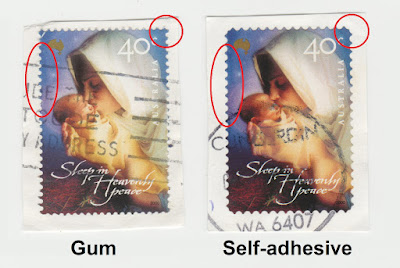As you may know from my previous posts, I have been struggling with removing self-adhesive stamps from paper. I finally figured that hot water seems to work the best for me in removing self-adhesive stamps from paper. Having tried my hand at many many Australian stamps, I share with you a way to recognize these self-adhesive stamps on paper so you can be better prepared for them before you soak them in hot water.
Australia releases many variations of stamps. Typically stamps released in miniature sheets seem to be on gum paper, while others are on self-adhesive paper. The perforation of these stamps is an easy way to recognize them.
I have noticed the above differences only in Australian stamps. My guess is these might be similar for other countries too like USA, Great Britain etc.
Australia releases many variations of stamps. Typically stamps released in miniature sheets seem to be on gum paper, while others are on self-adhesive paper. The perforation of these stamps is an easy way to recognize them.
- Gum stamps usually have finer perforation (14) while self-adhesive stamps have more spread-out wavy perforation (11 or 11½).
- Check the corners of the stamps. Gum stamps have regular corner perforation while self-adhesive stamps have a more rounded corner with missing perforation in the corner.
- Gum stamps also have pulled effect to perforations, while self-adhesive stamps have neater separation.
I have noticed the above differences only in Australian stamps. My guess is these might be similar for other countries too like USA, Great Britain etc.

















